Faculty Research & Honors
Securing Our Health
From therapeutics for Alzheimer’s disease to implantable discs for the spinal column to the health of caregivers, researchers from across many disciplines at Cornell are working to protect and ensure our best health. Cornell faculty labs are making discoveries and creating new technologies for disease control and prevention and related societal issues. Here are a few examples of this work.
- Creating Spinal Disc Implants and Artificial Ears
- Larry Bonassar, Biomedical Engineering, and Roger Härtl, Neurosurgery, and Jason Spector, Surgery, Weill Cornell Medical College
- Controlling Listeria
- Kathryn J. Boor, Food Science/Dean, College of Agriculture and Life Sciences
- A Key to Treating Multiple Sclerosis
- Margaret S. Bynoe, Microbiology and Immunology
- What Cancer Cells Need to Travel
- Richard A. Cerione, Molecular Medicine/Chemistry and Chemical Biology
- Tracking Hypertension
- Robin L. Davisson, Biomedical Sciences/Cell and Developmental Biology, Weill Cornell Medical College
- Teens’ Chronic Stress and Poverty
- Gary W. Evans, Human Development
- Searching for Alzheimer’s Disease Therapies
- Costantino Iadecola, Neurology and Neuroscience, Weill Cornell Medical College
- A Biosensor for Disease Detection
- Amit Lal, Electrical and Computer Engineering
- Personality and Caregivers’ Health
- Corinna Loeckenhoff, Human Development
- Damaged Blood Vessels Regenerated
- Shahin Rafii, Medicine/Ansary Stem Cell Institute
- Preventing Atherosclerosis
- Cynthia A. Reinhart-King, Biomedical Engineering
- Linking Diabetes and Inflammation
- Ling Qi, Nutritional Sciences
- A Missing Gene in Breast Cancers
- John C. Schimenti, Biomedical Sciences/Molecular Biology and Genetics
- What Kids Want on Their Plates
- Brian C. Wansink, Applied Economics and Management
- Living Tissue in 3-D
- Chris Chunhui Xu, Applied and Engineering Physics
Creating Spinal Disc Implants and Artificial Ears
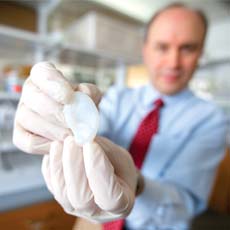
Larry Bonassar, Biomedical Engineering, and Roger Härtl, Neurosurgery, Weill Cornell Medical College, created an artificial implant to replace intervertebral discs in the spinal column. These biological implants will treat a range of degenerative disc diseases—a leading cause of disability worldwide.
Later, the Bonassar lab, along with Jason Spector, Surgery, Weill Cornell Medical College, reported that they had created an artificial ear—using 3-D printing—that looks and acts like a natural ear. The development brings hope for children born with the congenital deformity microtia and individuals who have lost part or all of their external ear in an accident or from cancer.
Controlling Listeria
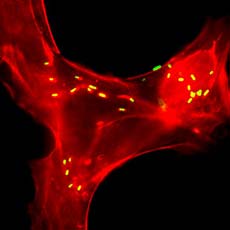
Kathryn J. Boor, Food Science/Dean, College of Agriculture and Life Sciences, discovered a compound that is safe for mammals but kills Listeria. The compound, fluoro-phenyl-styrene-sulfonamide, interrupts a mechanism that controls genes expressed when the bacterium encounters a rapid change in its environment. The Boor lab set a new approach in the search for antibiotics that are not dangerous to mammals but stop pathogens like Listeria.
A Key to Treating Multiple Sclerosis
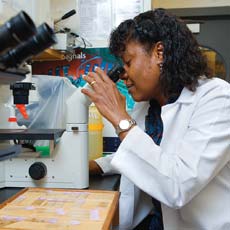
Margaret S. Bynoe, Microbiology and Immunology, discovered a receptor to control the movement of immune cells across central nervous system barriers (including the blood-brain barrier), which may hold the key to treating multiple sclerosis. The blood-brain barrier is composed of specialized cells that selectively prevent substances from passing from the bloodstream into the brain. The Bynoe lab revealed how an A2A adenosine receptor expressed on blood-brain barrier cells serves as a gateway, allowing immune cells to enter the brain.
What Cancer Cells Need to Travel
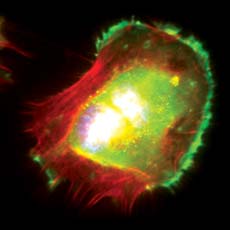
Richard A. Cerione, Molecular Medicine/Chemistry and Chemical Biology, discovered what cancer cells need to travel as they invade new tissue. The Cerione lab identified two key proteins that cancer cells need in order to move and uncovered a new pathway that treatments could block, immobilizing mutant cells to keep cancer from spreading. Above is a migrating cervical cancer cell stained for tissue transglutaminase (green). Cells must gather this protein at their leading edge in order to move.
Tracking Hypertension
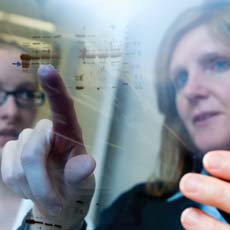
Robin L. Davisson, Biomedical Sciences/Cell and Developmental Biology, Weill Cornell Medical College, traced hypertension to a newfound cellular source in the brain, showing that treatments targeting this area can reverse the disease. The Davisson lab concluded that when the heart works too hard, the brain may be to blame, which is changing how scientists look at high blood pressure. This new paradigm for tackling the worldwide hypertension epidemic offers hope for billions of people with high blood pressure. Davisson was awarded the 2012 Arthur C. Corcoran Memorial Award from the American Heart Association for distinguished research in the field of hypertension.
Teens’ Chronic Stress and Poverty

Gary W. Evans, Human Development, reported that childhood adversity is linked to chronic stress in adolescence, setting the stage for a host of physical and mental health problems. This longitudinal study from Evans’ lab revealed that chronic stress in adolescence is linked to how much childhood time was spent in poverty.
Searching for Alzheimer’s Disease Therapies
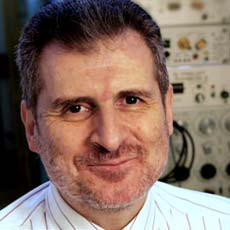
Costantino Iadecola, Neurology and Neuroscience, Weill Cornell Medical College, and his research colleagues discovered that amyloid peptides are harmful to the blood vessels that supply the brain with blood in Alzheimer’s disease, accelerating cognitive decline by limiting oxygen-rich blood and nutrients. Iadecola says, “If we can stop the accumulation of amyloid in these blood vessels, we might be able to significantly improve cognitive function in Alzheimer’s disease patients.”
A Biosensor for Disease Detection
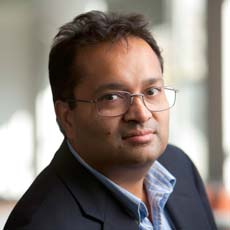
Amit Lal, Electrical and Computer Engineering, invented a nanomechanical biosensor that could result in a quick, inexpensive, highly sensitive test that identifies disease markers and other molecules in low-concentration solutions for early stage disease detection. The Lal lab worked with the lab of Dan Luo, Biological and Environmental Engineering, to confirm the biosensor’s operation.
Personality and Caregivers’ Health
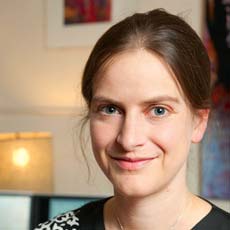
Corinna Loeckenhoff, Human Development, and research colleagues reported—in one of the first studies to look at the influence of care-receiver personality on caregiver health—that people who cared for individuals who are “easygoing” and “well-intentioned” reported better physical health than those who cared for headstrong and less agreeable people. In another study, Loeckenhoff and research colleagues discovered that certain personality traits of caregivers, like extroversion, reduced risks of caregivers’ mental and physical health problems.
Damaged Blood Vessels Regenerated
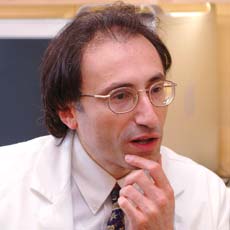
Shahin Rafii, Medicine/Ansary Stem Cell Institute, and research colleagues discovered a way to utilize diagnostic prenatal amniocentesis cells, reprogramming them into abundant and stable endothelial cells capable of regenerating damaged blood vessels in heart disease, stroke, diabetes, and trauma and repairing injured organs. Rafii says, “Currently, there is no curative treatment available for patients with vascular diseases, and the common denominator to all these disorders is dysfunction of blood vessels, specifically endothelial cells that are the building blocks of the vessels.” A patent has been filed on the discovery.
Preventing Atherosclerosis
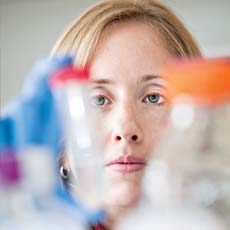
Cynthia A. Reinhart-King, Biomedical Engineering, and research colleagues found a clue to the underlying causes of atherosclerosis that relates to how the cells lining the blood vessels, endothelial cells, behave as the vessels stiffen with age. This insight could lead to more targeted drug therapies to prevent the disease.
Linking Diabetes and Inflammation

Ling Qi, Nutritional Sciences, says, “When tissue is inflamed, it becomes insulin resistant.” His lab discovered that a type of immune cell called natural killer T cells is an important part of the longstanding puzzle of how obesity, type 2 diabetes, and low-level inflammation are linked. A patent was filed as a result of the study. Qi also won an American Diabetes Association Career Development Award—a $912,500 prize given to junior faculty members who have made significant contributions to diabetes research.
A Missing Gene in Breast Cancers
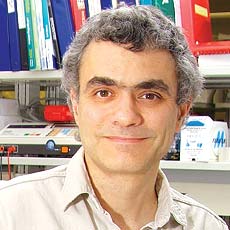
John C. Schimenti, Biomedical Sciences/Molecular Biology and Genetics, found that 28 percent of breast cancers lack a certain gene called NF1. This gene deletion plays a role in 60,000 breast cancer patients in the United States and 383,000 worldwide. The finding suggests that several existing drugs may be effective in treating breast cancers with missing NF1.
What Kids Want on Their Plates
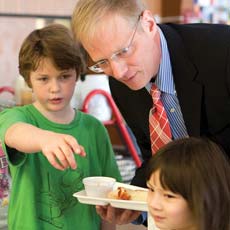
Brian C. Wansink, Applied Economics and Management, found that kids like food plates with seven different items and six different colors, which is different from their parents’ preference for three items and three colors. The research implies new ways of encouraging more nutritionally diverse diets. The Wansink lab shows how to change broccoli and fish, for example, so that they look tastier to children.
Living Tissue in 3-D
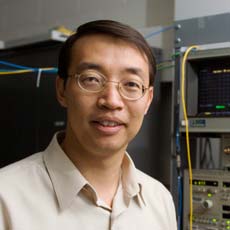
Chris Chunhui Xu, Applied and Engineering Physics, and research colleagues demonstrated a new imaging technique that delivers high-speed 3-D images in living tissue. Scientists trying to decipher the microenvironment of living biological tissues now have a way of imaging their inner workings. Taking high-resolution, 3-D images of the subcortical region of a live intact mouse’s brain, Xu and colleagues demonstrated three-photon microscopy with a threefold improvement in depth limits over Cornell-invented multiphoton microscopy.
